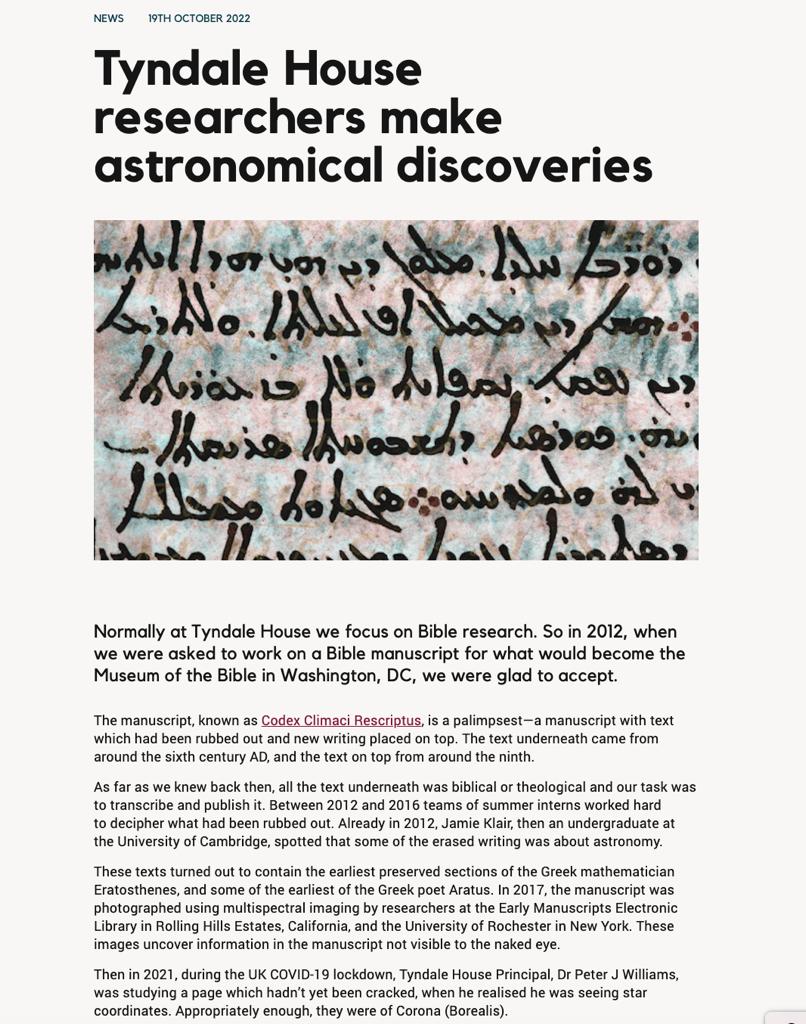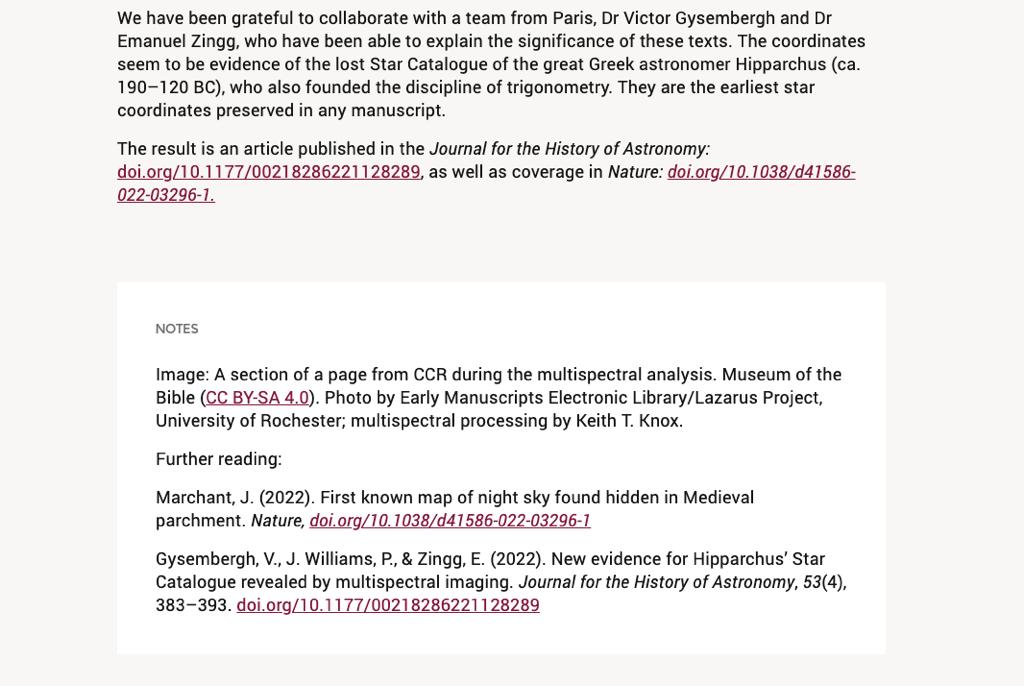Stars of wonder: past pupil's amazing discovery

AN RGS past pupil has discovered the oldest known map of the stars hidden in an ancient manuscript.
Dr Peter Williams, who left RGS in 1989, is a leading Biblical historian at the University of Cambridge.
He made the discovery while researching a Bible manuscript belonging to the Museum of the Bible in Washington, DC.
The ancient parchment, which came from a monastery in Egypt, is a palimpsest – a manuscript with text which had been rubbed out and new writing placed on top.
“In the early Middle Ages when papyrus had become scarce and the invention of paper in the West was still centuries away, there was a huge shortage of writing material," he explains.
"Consequently, if you found an old manuscript in a script or language you didn’t use you would probably rub it out to put new writing on top.
“Now modern imaging techniques are enabling us to read faint text that was rubbed out over a millennium ago, sometimes even if all the ink has been removed."
The text underneath turned out to come from around the sixth century AD, with the text on top from the ninth. Dr Williams had set his teams of summer interns at the Tyndale House research institute he leads the task of trying to decipher just what had been rubbed out ten years ago and one student, Jamie Klair, discovered some of it was about astronomy.
But it was during the Covid 19 lockdown on 2021, as Dr Williams was studying a page which his teams of scholars hadn’t managed to crack, that he realised he was seeing star co-ordinates, which turned out to be – appropriately enough – of Corona Borealis.
He discovered that it was a fragment from the 2,100-year-old catalogue of the stars by the Greek astronomer and founder of trigonometry Hipparchus, a much noted chart of celestial bodies which was thought to be lost to the ages.
They are the earliest star coordinates preserved in any manuscript.
“Hipparchus’s lost Star Catalogue is famous in the history of science as the earliest known attempt to record accurate co-ordinates of many celestial objects observable with the naked eye,” the resulting paper co-authored by Dr Williams and published in the Journal for the History of Astronomy, said.
“This new evidence is the most authoritative to date and allows major progress in the reconstruction of Hipparchus’s Star Catalogue,” the research said.
The fragment has enlightened our understanding of ancient astronomy, which appears to have been a remarkably accurate discipline, with Hipparchus’s measurements correct to within one degree of the stars’ actual positions. Some 300 years later, the Greek mathematician and astronomer Ptolemy wrote his Almagest, the oldest star catalogue known to historians before this discovery.
The texts also turned out to contain the earliest preserved sections of the Greek mathematician Eratosthenes and some of the earliest writings of the Greek poet Aratus and the Tyndale team went on to collaborate with a team from Paris to explore the significance of Hipparchus's catalogue in more detail.

Dr Williams studied Greek, Latin and music at A-level at school, where he was deputy head boy. He went on to read classics and Hebrew at Cambridge, and says he now combines his love for old languages, which he received at RGS, with research on the Bible: “I find that, while leading a research institution, it’s possible to study things which are far too complex for one individual to pursue and there’s still plenty new to discover about the most studied book on the planet.”
Having studied for an MPhil and PhD at Cambridge, apart from a brief residency as senior lecturer in theology at the University of Aberdeen, Dr Williams has remained at the University of Cambridge, where he is an affiliated lecturer in the Faculty of Divinity, since leaving RGS.
Report from Tyndale House, which is affiliated with the University of Cambridge:









